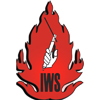Analisa korosi pada sambungan repair body mobil menggunakan pengelasan oxy-acetylene
Abstract
Corrosion in cars is influenced by environmental factors, namely humidity, weather, sea air, rainwater, muddy roads; and also by mechanical factors such as bumps and scratches. Car parts that are considered prone to corrosion are the areas where the welding joints or folds are located, which causes loss or rotten of body. The repair process is carried out by connecting the porous parts using oxy acitilline welding known as the Repair Body process. Welding uses a low carbon steel plate, or galvanized steel plate, then grinding and followed by a coating and painting process. However, in a relatively short period of time the section experienced deflection which was predicted due to corrosion in the weld joint area. This article will analyze the corrosion rate of oxiacitilline welding joints between AISI 4130 (car body) and ST 37 steel plates and Galvanized steel plates. The aim is to study the effect of the type of connection material, the effect of coating, the effect of immersion duration, and the effect of the corrosion medium on the corrosion rate. The determination of the corrosion rate refers to ASTM G31-72 (Standard Practice for Laboratory Immersion Corrosion Testing of Meta). The results showed that the highest corrosion rate occurred in the AISI 4130 specimen (car body) which was connected to ST 37 with HCl solution corrosion media, namely 5.2919 mmpy, while in NaCl media the corrosion rate was much lower, namely 0.1337 mmpy, and aquades amounting to 0.1098 mmpy with an immerson time of 272 hours. Meanwhile, the corrosion rate in AISI 4130 specimens connected with galvanized steel shows a slower corrosion rate compared to joints with ST 37 steel. Likewise, the coating process shows a decrease in the corrosion rate well.
Keywords
Full Text:
PDFReferences
M. G. Fontana, Corrosion Engineering. 1987.
Trethewey, K. R., & Chamberlain, J. “Korosi untuk Mahasiswa dan Rekayasawan (A. T. K. Widodo, Ed.),” PT. Gramedia Pustaka, Jakarta: 1991
E. S. Arbintarso, “Perilaku Korosi Pada Sambungan Plat Pembentuk Bodi Mobil,” J. Teknol. Technoscientia, pp. 61–69, 2009
A. Yunus, “Korosi Logam dan Pengendaliannya; Artikel Review,” J. POLIMESIN, vol. 9, no. 1, pp. 847–852, 2011.
A. P. Bayuseno, “Analisa Laju Korosi pada Baja untuk Material Kapal Dengan dan Tanpa Perlindungan Cat,” ROTASI, vol. 11, no. 3, pp. 32–37, 2009.
A. Wisnujati and A. Nurhuda, “Analisis Sifat Fisik dan Mekanik Sambungan Las Oxy-Acetylene pada Pelat Baja Karbon Rendah dengan Variabel Nyala Torch Karburasi,” J. Engine Energi, Manufaktur, dan Mater., vol. 1, no. 2, pp. 1–7, 2017.
I. S. M. Eng, D. Setyawan, and J. P. Bandono, “PENGARUH PROSES TEMPERING PADA HASIL PENGELASAN BAJA 516-70 TERHADAP MECHANICAL PROPERTIES DAN SIFAT KOROSI.”
M. A. Arif, B. Agung, O. S. Suharyo, and P. Pratisna, “The Effect of Protective Coatings using L-5A Type toward Corrosion Rate on Mild Steel Grade a Material (Case Study in Indonesia Warship),” J Mater. Sci Eng, vol. 7, no. 470, pp. 22–2169, 2018.
L. D. Yuono and U. S. Dharma, “PENGARUH PENDINGINAN CEPAT TERHADAP LAJU KOROSI HASIL PENGELASAN BAJA AISI 1045,” Turbo J. Progr. Stud. Tek. Mesin, vol. 6, no. 1, 2017.
N. Handra and P. I. Yudi, “Studi Kekuatan Hasil Las Oxy-Acetylene pada Variasi Kampuh,” J. Tek. Mesin, vol. 1, no. 1, 2013
DOI: http://dx.doi.org/10.30811/jowt.v2i2.2084
Refbacks
- There are currently no refbacks.

This work is licensed under a Creative Commons Attribution-ShareAlike 4.0 International License.
Ciptaan disebarluaskan di bawah Lisensi Creative Commons Atribusi-BerbagiSerupa 4.0 Internasional.
Mailing Address:
Politeknik Negeri Lhokseumawe
Jl. Banda Aceh-Medan
Km. 280,3, Buketrata, Mesjid Punteut, Blang Mangat,
Kota Lhokseumawe, 24301
Propinsi Aceh,
Indonesia























